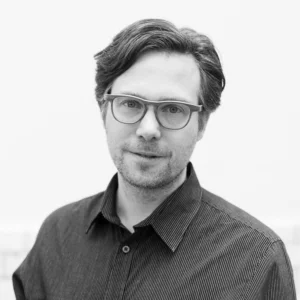Research, Project, Process - Changes in Work Practice in the Independently Produced Performing Arts by Establishing Multi-Year Funding
Lecture at the "Transformationen der Theaterlandschaft“ Symposium
Dr. Philipp Schulte, Hessische Theaterakademie, Frankfurt am Main
Vortrag beim Symposium "Transformationen der Theaterlandschaft"
Exposé
The partial study "Research, Project, Process” examines the question: what qualitative effects do multi-year funding systems have on the production situation for freelance artists in the field of independently producing performing arts in the Federal Republic of Germany? What project forms, infrastructures, working conditions and perspective are created by variously limited funding structures? What effects on concrete artistic processes and results can be recognized? What needs can be derived from this for a funding system that acknowledges the social value of art and is useful for artistic innovation?
The character of multi-year funding systems takes into account increasingly process-oriented factors (beyond the concrete artistic result (the performance) and the thus generated public interest (the audience)) that examine the development of an individual artist or a group, not least of all with regard to their location in a concrete region. It is not primarily the individual project which is measured in terms of results that is relevant, but rather a process which is manifested beyond premieres, performances and tour performances in the most varied of forms: Forms generate artistic practice such as the creative conceptual and research phases that serve further development, the discovery or invention of new formats of presentation in testing new meeting formats as work on a respective audience. Just like individual project funding, multi-year funding is also approved on the basis of applications; these, however, are more complex because they are subject to the requirement of not just sketching out a single project, but rather must establish trust in the representation of an artistic development over the course of numerous years. They thus require the applying artists to have a higher willingness and competence in self-reflection and understanding.
The questions in this qualitative partial study on various forms and aspects of a multi-year funding, which is based on interviews with experts, and which the various interlocutors addressed, can be categorized in five leading questions that also structure the present text. They all deal with different fields that were or can be concretely affected by the implementation of multi-year funding. These complexes address a changing understanding of art in society, the associated new demands on artistic production processes, the effects of establishing multi-year funding on the differentiation of funding systems for art, their effects on a relationship between producing artists and city theaters and festivals as production platforms, as well as the societal and social status of artists in the field of the independently produced performing arts.
The insights gained from the partial study prove that, in addition to instruments such as process, research and residency funding, the creation and expansion of multi-year programs have sustainably and elementarily strengthened the (work) situation as well as artistic results in the field of independently produced performing arts from multiple perspectives; this represents an important element in the German federal funding structure that is worthy of expansion. First, multi-year funding lives up to a changing understanding of performing art that is increasingly seen as process oriented and supports the production methods that reflect this understanding. Second, they lead away from purely “digital” funding systems that don’t offer any alternatives between institutional long-term and individual project funding. Third, multi-year funding structures strengthen the position of independently producing artists towards theaters and other organizers as well as festivals. And fourth, they improve the societal status of artists and support a reflection about appropriate social conditions for qualitative art production on a regional and supra-regional level.
Involved
-
Dr. Philipp Schulte
Hessische Theaterakademie | Frankfurt/Main
 © Dirk Rose
© Dirk Rose
Dr. Philipp Schulte
Hessische Theaterakademie | Frankfurt/MainPhilipp Schulte is a professor specializing in scenography and performance theory at the Norwegian Theatre Academy (Fredrikstad), visiting professor of scenography at the Karlsruhe University of Design, and managing director of the Hessian Theatre Academy (Frankfurt/M.). He studied Applied Theatre Studies in Bergen (Norway) and Giessen, where he received his PhD in 2011. After receiving his doctorate, he worked as a research assistant in Giessen for eight years. Since 2012, he has directed international festival campus and academy formats that he conceived (Ruhrtriennale, Theaterformen Hannover/Braunschweig, KunstFestSpiele Herrenhausen (together with Antonia Rohwetter)). As a freelance writer and dramaturg, he has worked for zaungäste ensemble (Frankfurt/M.), Liam Al-Zafari (Oslo), Mamoru Iriguchi (Edinburgh), Andreas Bachmair (Amsterdam), Mathias Max Herrmann (Hannover), and the inclusive performance collective I Can Be Your Translator (Dortmund), among others. He has published numerous essays and books. Schulte has taught and lectured theater theory at various universities and art colleges in Germany and Norway. He lives in Frankfurt am Main.